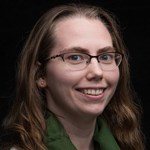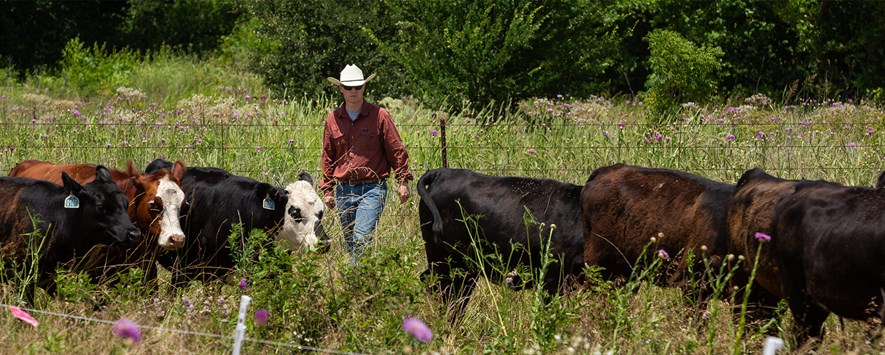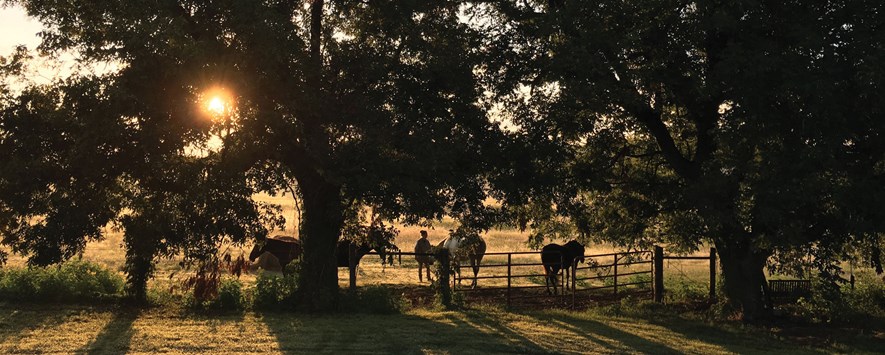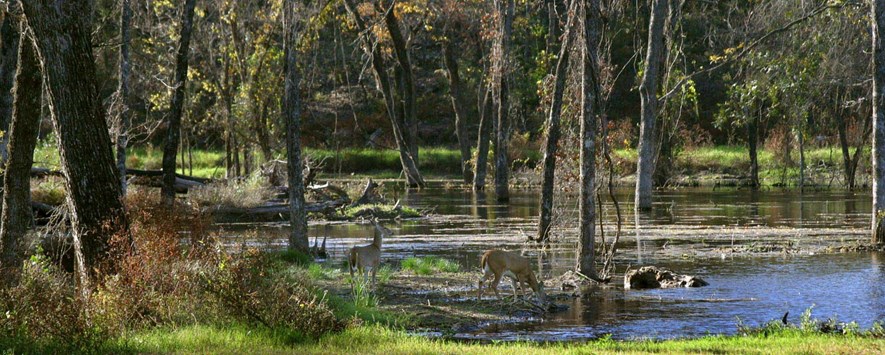Joe and Jeannie Dobson return to their roots to enjoy the family land after years of city life.
Joe Dobson remembers sleeping on a cot outside his childhood home during hot Oklahoma summers through the 1950s. The boy would wake to the nudging of his horse, Thunder, moments before jumping on her bareback. The palomino would then dart to the barn for her breakfast, with Dobson clutching her mane.
“She never did give me a ride back to the house,” laughs Dobson near the spot where the memory was made, the house still standing in the background. He and his wife, Jeannie, recount decades of trials and joys on the land east of Pauls Valley where Dobson grew up.
 Joe Dobson checks cattle during a morning drive through the pasture.
Joe Dobson checks cattle during a morning drive through the pasture.
There had been the Jersey cow he milked as a boy and the itchy job of hand-sacking homegrown oats for the horses. In the middle of a nearby field stands a lone post. It’s the last remnant of the original corral built by Dobson’s father, who purchased the land in the mid-1930s to build a cow-calf operation.
Then, in the 1970s, anaplasmosis hit the ranch. The deadly blood disease spread among the cattle, and they lost the entire herd.
Left with a blank slate, Dobson’s father asked his son if he wanted to take over. Dobson and Jeannie were already living in Mustang, Oklahoma, more than 70 miles away. Though they made the trip to help out every weekend, they weren’t looking to get into the cattle business full-time and agreed that Dobson’s father should lease the grazing lands to a neighbor.
 Back to the Beginning
Back to the Beginning
Joe and Jeannie Dobson stand in front of Joe’s childhood home east of Pauls Valley, Oklahoma. After careers in the Oklahoma City area, the Dobsons have returned to manage the land Joe’s father purchased in the mid-1930s. The couple enjoy working with the cattle, watching the wildlife, and making sure the land remains healthy and productive for generations to come.
In the city, Dobson climbed the ranks at his office job before branching out to start his own rock-hauling business while Jeannie decorated homes across town. They often found themselves taking their daughter, and eventually grandchildren, to the farm, where Dobson’s parents lived until his father’s death in 1975 and mother’s in 2000.
“I was young and felt like there were better opportunities in the city,” Dobson says, “but my heart never left here.”
 Joe and Jeannie Dobson fill feed bunks for their grazing cattle.
Joe and Jeannie Dobson fill feed bunks for their grazing cattle.
Dobson was ready to return to a more active role on the acreage by the time the neighbor decided to retire in 2005. He and Jeannie began making the weekly trip from Mustang again. Only this time, they didn’t have the elder Dobson’s counsel. And an unruly wilderness was growing up around falling fences.
After about two years of trying to revive the land, Dobson and his grandson, Cole, went to Roff, Oklahoma, to buy hay. There, they met Charles Rohla, Ph.D., who manages pecan and specialty agriculture activities at Noble Research Institute. Rohla encouraged Dobson to give Noble a call, which led him to Eddie Funderburg, Ed.D., senior soils and crops consultant.
 Cattle hydrate while crossing the creek to greener pastures. The creek, which runs through the property, is one of the Dobsons’ favorite feature of their land.
Cattle hydrate while crossing the creek to greener pastures. The creek, which runs through the property, is one of the Dobsons’ favorite feature of their land.
“We knew we needed help, and thankfully Noble was able to come to our rescue,” Dobson says. “We knew the basics, but so much had changed in 30 years. Without Eddie, we probably would have floundered.”
First, Funderburg helped the Dobsons identify and control the major weed invading the land: milk thistle. Then, once they decided to raise stocker calves instead of managing a cow herd like Dobson’s father, Funderburg advised them as they planted wheat fields. He encouraged them to sow ryegrass into the wheat to extend the grazing season and taught them how to take soil samples so they would fertilize only as much as needed. He also put the couple in contact with someone who could bring them up to speed on vaccination and cattle handling protocols.
“We knew we needed help, and thankfully Noble was able to come to our rescue. We knew the basics, but so much had changed in 30 years. Without Eddie, we probably would have floundered.”
— Joe Dobson
“Joe is the kind of guy who is not afraid to ask questions, and he has one of the most contagious positive attitudes,” says Funderburg, who once stood alongside Dobson in a wheat field swarming with armyworms. The farmer simply asked what he could do and punctuated the conversation with, “Life is good.”
 “Time for Lunch!”
“Time for Lunch!”
Joe Dobson calls out to a group of stocker calves, encouraging them to eat. He and Jeannie plant wheat for the cattle to graze and sow ryegrass into the wheat fields to extend the grazing season. They are careful to apply only as much fertilizer as needed, a decision they base on soil test results.
“He seems to set a goal of being the nicest guy in the world every morning when he wakes up,” Funderburg adds.
Before the sun goes down, Dobson and Jeannie grab a Coke and drive around the fields each night they spend on the farm. They enjoy the sounds of cattle munching and talk to the inquisitive ones that come to stick their noses through the truck’s rolled-down windows. They admire the trees and wildlife, like the heron that Jeannie has named Harry.
“It’s been a journey getting back to the cattle, but we enjoy it,” Dobson says. “We’re only going to be here for a blink of an eye, so enjoy life and do right by people and the land.”




